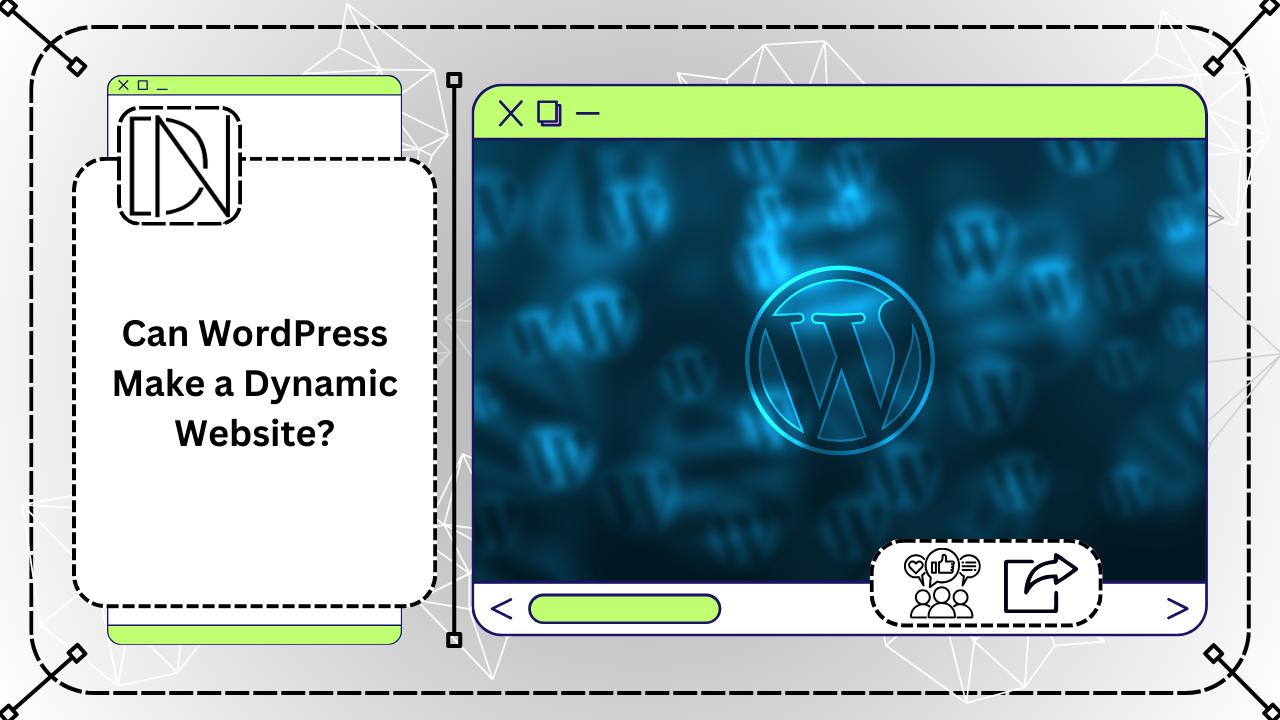What is Dynamic Website
Introduction to Dynamic Websites
The digital landscape is constantly evolving, and websites are no exception. Among the various types of websites, dynamic websites stand out for their interactivity and user-centric design. But what exactly is a dynamic website? This blog post aims to explain the fundamentals of dynamic websites and why they are crucial in today’s online environment.
What is a Dynamic Website?
Dynamic websites are characterized by their ability to generate and display different content based on user interactions. Unlike static websites, which offer the same content to every visitor, dynamic websites use elements like server-side scripting and database management to personalize the user experience. When a user visits a dynamic website, the content they see can change based on their actions, preferences, or even geographic location.
Key Features of Dynamic Websites
One of the core attributes of a dynamic website is its interactivity. Users can engage with various elements on the site, such as forms, search functions, or user profiles, which all contribute to a personalized and engaging experience. Another notable feature is content management. With a dynamic website, site administrators can easily update content without needing to alter the underlying code, making it simpler to keep the site current and relevant.
Benefits of Dynamic Websites
Dynamic websites offer several advantages. Firstly, they provide a richer user experience, which can lead to increased user satisfaction and retention. Secondly, they are more adaptable to different user needs and preferences, which can boost site performance and engagement. Finally, dynamic websites can be easier to maintain in the long term, as content updates and changes can be managed efficiently through content management systems (CMS).
Can WordPress make Dynamic Website
WordPress is a popular content management system (CMS) that is widely known for its ability to create and manage websites. Many people associate WordPress with simple blogs or static websites, but it is also capable of creating dynamic websites that are interactive and engaging.
Before we dive into the details of how WordPress can make a dynamic website, let’s first understand what a dynamic website is. Unlike static websites that display the same content to every visitor, dynamic websites can change and adapt based on user interactions, preferences, and other factors. They often feature personalized content, user-generated content, and interactive elements.
So, can WordPress create such dynamic websites? The answer is a resounding yes! WordPress offers a range of features and functionalities that enable developers and website owners to create dynamic websites that meet their specific needs.
1. Themes and Templates
WordPress provides a vast library of themes and templates that can be easily customized and tailored to create a dynamic website. These themes come with pre-designed layouts, styles, and functionalities that can be modified to suit your requirements. Whether you want to create an e-commerce site, a portfolio website, or a social networking platform, there is a WordPress theme available for almost every niche.
2. Plugins and Extensions
One of the biggest advantages of using WordPress for dynamic websites is the extensive range of plugins and extensions available. These plugins add extra functionality to your website, allowing you to incorporate features such as user registration, social media integration, forums, event calendars, and much more. With thousands of plugins to choose from, you can easily enhance the interactivity and engagement of your website.
3. Custom Post Types
WordPress allows you to create custom post types, which means you can define different types of content for your website. For example, if you are building a real estate website, you can create custom post types for properties, agents, and testimonials. This flexibility enables you to organize and display your content in a dynamic and structured manner.
4. Dynamic Widgets and Sidebars
WordPress offers a widget system that allows you to add dynamic content to your website’s sidebars and other widget-ready areas. You can display recent posts, popular posts, social media feeds, advertisements, and more. By utilizing dynamic widgets and sidebars, you can keep your website fresh and engaging for visitors.
5. User Interaction and Engagement
WordPress provides several features that encourage user interaction and engagement. You can enable comments on your blog posts, allow users to submit content through forms, create user profiles, and implement social sharing buttons. These features not only make your website more dynamic but also foster a sense of community and encourage visitors to actively participate.
Conclusion
WordPress is not just limited to creating simple blogs or static websites. With its extensive range of themes, plugins, and customization options, it can be used to create dynamic and interactive websites that engage visitors and provide personalized experiences. Whether you are a beginner or an experienced developer, WordPress offers the tools and flexibility to bring your dynamic website ideas to life.
So, if you are looking to create a dynamic website, don’t overlook WordPress. Give it a try and explore the endless possibilities it offers!






